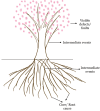Root Cause Analysis: Unraveling Common Laboratory Challenges
- PMID: 38435196
- PMCID: PMC10908306
- DOI: 10.7759/cureus.53393
Root Cause Analysis: Unraveling Common Laboratory Challenges
Abstract
Diverse errors occur in a pathology laboratory and manual mistakes are the most common. There are various advancements to replace manual procedures with digitized automation techniques. Guidelines and protocols are available to run a standard pathology laboratory. But, even with such attempts to reinforce and strengthen the protocols, the complete elimination of errors is yet not possible. Root cause analysis (RCA) is the best way forward to develop an error-free laboratory, In this review, the importance of RCA, common errors taking place in laboratories, methods to carry out RCA, and its effectiveness are discussed in detail. The review also highlights the potential of RCA to provide long-term quality improvement and efficient laboratory management.
Keywords: errors; fishbone; laboratory; laboratory error; oral pathology laboratory; outcome analysis; pathology; quality improvement; root cause; root cause analysis.
Copyright © 2024, Srinivasaragavan et al.
Conflict of interest statement
The authors have declared that no competing interests exist.
Figures



Similar articles
-
Patient Safety/Quality Improvement Primer, Part II: Prevention of Harm Through Root Cause Analysis and Action (RCA2).Otolaryngol Head Neck Surg. 2019 Dec;161(6):911-921. doi: 10.1177/0194599819878683. Epub 2019 Oct 1. Otolaryngol Head Neck Surg. 2019. PMID: 31570058
-
An Analysis of Adverse Events in the Rehabilitation Department: Using the Veterans Affairs Root Cause Analysis System.Phys Ther. 2018 Apr 1;98(4):223-230. doi: 10.1093/ptj/pzy003. Phys Ther. 2018. PMID: 29325162
-
[Application of root cause analysis in healthcare].Hu Li Za Zhi. 2007 Dec;54(6):77-83. Hu Li Za Zhi. 2007. PMID: 18098113 Chinese.
-
Root cause analysis of critical events in neurosurgery, New South Wales.ANZ J Surg. 2015 Sep;85(9):626-30. doi: 10.1111/ans.12934. Epub 2015 Jan 12. ANZ J Surg. 2015. PMID: 25581358 Review.
-
Detecting and preventing the occurrence of errors in the practices of laboratory medicine and anatomic pathology: 15 years' experience with the College of American Pathologists' Q-PROBES and Q-TRACKS programs.Clin Lab Med. 2004 Dec;24(4):965-78. doi: 10.1016/j.cll.2004.09.001. Clin Lab Med. 2004. PMID: 15555751 Review.
Cited by
-
Assessment of Turnaround Time (TAT) for Oral Squamous Cell Carcinoma Biopsies: A Single-Institution Experience.Cureus. 2024 Jun 19;16(6):e62677. doi: 10.7759/cureus.62677. eCollection 2024 Jun. Cureus. 2024. PMID: 39036196 Free PMC article.
-
CRABEL Score Assessment for Oral Surgery Excision Biopsy Case Notes of Oral Squamous Cell Carcinoma.Cureus. 2024 Apr 1;16(4):e57394. doi: 10.7759/cureus.57394. eCollection 2024 Apr. Cureus. 2024. PMID: 38694653 Free PMC article.
References
-
- Cost-utility analysis in pathology laboratory testing: review of literature and proposal of new descriptive model for cost analysis. Sangamithra S, Karthikeyan R, Pratibha R. J Pharm Negat Results. 2022;13:1133–1138.
-
- Critical leadership and management skills for pathology practice. Brimhall BB, Wright LD, McGregor KL, Hernandez JS. Arch Pathol Lab Med. 2007;131:1547–1554. - PubMed
-
- Pathology lab management system. Kiran KS, Shekhar WA, Santosh BA. https://www.ijrti.org/papers/IJRTI2004012.pdf IJRTI. 2020;5:2456–3315.
-
- The attributes of medical event reporting systems: experience with a prototype medical event reporting system for transfusion medicine. Battles JB, Kaplan HS, Van der Schaaf TW. https://www.researchgate.net/publication/13462580_The_attributes_of_medi.... Arch Pathol Lab Med. 1998;122:231–238. - PubMed
-
- Singh G, Patel RH, Boster J. Treasure Island (FL): StatPearls Publishing; 2023. Root cause analysis and medical error prevention. - PubMed
Publication types
LinkOut - more resources
Full Text Sources
